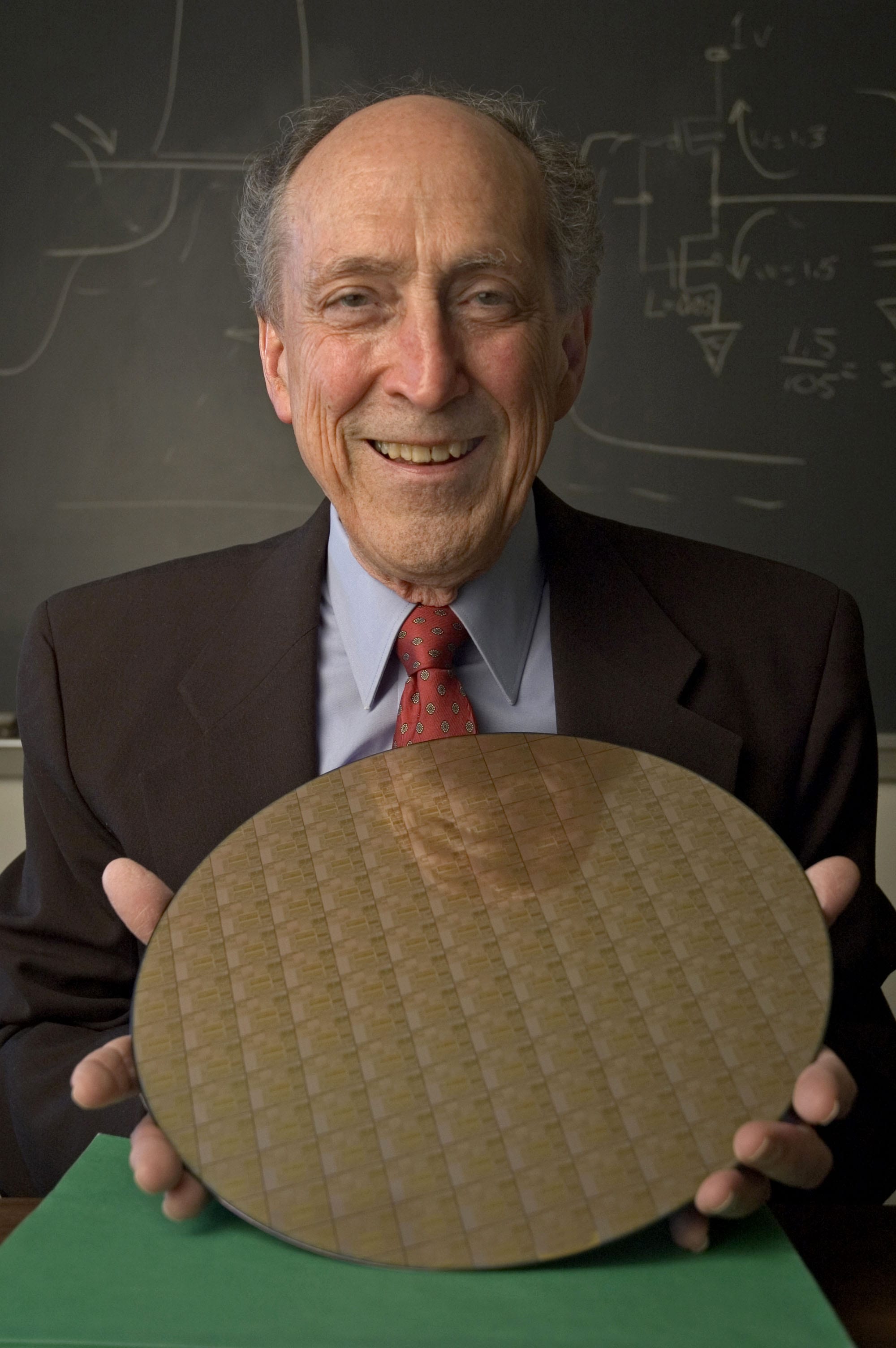Robert H. Dennard, an alumnus of SMU’s Bobby B. Lyle School of Engineering, will receive engineering’s highest honor “for his invention and contributions to the development of Dynamic Random Access Memory, or DRAM, used universally in computers and other data processing and communication systems.”
The Charles Stark Draper Prize is a $500,000 annual award given by the National Academy of Engineering. It honors engineers whose accomplishments have significantly benefited society. The award was presented to Dennard at a gala dinner in Washington, D.C., on February 17.

Dennard’s invention of dynamic random access memory using one-transistor cells paved the way for the worldwide computing explosion by making cheap, high-density memory available. DRAM market sales in 2008 totaled an estimated $420 billion. Watch the IBM video about Dennard and DRAM.![]()
DRAM is a form of computer memory that puts bits of data into capacitors, which are energy-storage devices within a miniaturized electronic circuit, and periodically recharges the capacitors so that the information in them is not lost.
Dennard’s one-transistor design was a vast improvement over the six-transistor cell in use at that time. Dennard’s ability to use only a single metal-oxide-semiconductor transistor, called MOS, allowed his memory cell to be much smaller and simpler in design than its predecessor. MOS is a device that conducts electricity, amplifying the charge as the electricity is passed along.
Robert H. Dennard
In addition, Dennard and associates developed a set of consistent scaling principles for miniaturizing MOS transistors and the integrated circuits using them, which are the basis for today’s electronic microprocessor and DRAM chips. In the early 1970s the industry was concerned with how far MOS transistors could be miniaturized without affecting their switching ability.
Dennard’s IBM group introduced a theory, called constant-field scaling, which addressed these issues. This scaling allowed for computers to run faster on significantly less energy and thus be less costly to operate and is a major driver of the industry. Dennard’s 1974 paper on MOS transistor scaling is universally referenced and has been reprinted as a “Classic Paper” in the Proceedings of the Institute of Electrical and Electronics Engineers.
After earning B.S. and M.S. degrees in electrical engineering from Southern Methodist University and a Ph.D. from Carnegie Mellon University in 1958, Dennard spent his entire professional career in various positions at IBM, including the prestigious title of IBM Fellow beginning in 1979. He was elected to the National Academy of Engineering in 1984.
Related links:
IBM: Robert H. Dennard![]()
IEEE: “Thanks for the memories”
Natl Academy of Engineering: Robert H. Dennard
IBM: Robert H. Dennard
The Franklin Institute: Robert H. Dennard
Lemelson MIT Program: Robert H. Dennard
Natl Inventors Hall of Fame: Robert H. Dennard
IEEE: Robert H. Dennard
Bobby B. Lyle School of Engineering
